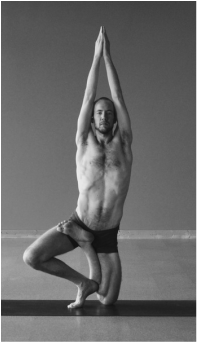|
As discussed in The Purpose of Yoga, Part 1, the goal of yoga is the transformation of our perception of ourselves and the world around us to see things as they truly are. Physical Postures/Asana is one of the steps on that path, often the first and generally considered to be the simplest.
How can we practice asana to aid our progress in that direction? What does asana offer that transforms and purifies our perceptions? Does physical health have anything to do with it? What about strength, flexibility and balance? What role does cardiovascular health play? What role does stress play? The most challenging element of Physical Practice is that it is easily clouded by the many peripheral benefits like strength, flexibility, weight loss, reduced stress, etc. These benefits are real and they are wonderful, but they are side-effects of the yoga practice. Or rather they are sign-posts that we will pass on our journey. If we make these the goal of our yoga practice - if we exercise to lose weight or reduce stress - we are missing the forest for the trees. We are losing track of the bigger picture to focus on one small element within. We will attain the benefit we seek, but we lose out on the much greater possibilities that are available in a yoga practice. We are like a child who uses the pages of a textbook to make paper airplanes. The paper airplanes might be wonderful, but there is so much more available if the child were to look a little deeper. In Asana practice we use the body as a tool of awareness, presence, control. We start externally, farthest from the mind, bringing the physical elements of the body under control and understanding. It is control and understanding in the broadest sense; control of the muscles, limbs and body, external elements. Motion, tightness, strength, balance, pain, will-power. We use the body to develop the mind, learn about the mind and our preconceptions through the lens of the body. STRENGTH We build strength simply through using the body, by challenging it. Strength is not necessarily a goal of the practice except that it allows proper usage and function of the body. If we have areas of extreme weakness, like in the lower back, our spines and intestines will suffer and deteriorate. Building functional strength is therefore valuable in promoting full-body health. FLEXIBILITY Flexibility is another product of asana practice. We challenge the body and our perception of it. You know that creepy, uncomfortable feeling you get when you stretch a tight area? That feeling is closer to the true yoga than the flexibility it creates. The discomfort of the mind and body facilitate change - our minds relax and focus, our bodies relax and "stretch". This promotes mind-body connection and gradually creates a change in perspective. We once thought of ourselves as "tight" or "inflexible" and so we were. Over time we grow to think of ourselves as "relaxed," "present" and "open" so we are. BALANCE Balance is the element of asana that is closest to the true goals of yoga practice. Because it is difficult to balance on one leg or upside down with a wandering mind, the practice of balance encourages mental stillness, complete presence of mind, and mind-body unity. It is very simple in concept but very powerful. Practicing balance is the most powerful thing we can do with our asana. STRESS Most physical practices reduce stress in the mind and body, and yoga is no exception. By putting the body under stress and learning to relax the mind and body, we become skillful at responding to challenging situations. We become mindful and present and it becomes hard to shake us or wind us up. HEALTH My teacher, Tony Sanchez, has said that yoga is all about creating health. If we practice the right postures we can improve our physical health: our digestion, metabolism, sleep, endocrine, circulatory and nervous systems. Asana can massage the internal organs and glands, enhancing blood flow and therefore promoting healing of our tissues. Improved health facilitates the ultimate goal of yoga by freeing the mind and body from concern with physical issues. It is hard to do more advanced yoga, like meditating, if our body is full of pain and our mind is restless. ENERGY In the grander scheme, asana puts us in touch with the greater forces that lie within us. We become aware of the energy that runs through us; we learn how to recognize it and focus it. We begin to control and quiet the mind which will lead us to the next area of yoga, Pranayama, which is a dedicated focus on recognizing, focusing and controlling the energy of the body and mind, usually using the breath as a tool. The Purpose of Yoga, Part 1: Introduction The Purpose of Yoga, Part 3: Energy Control/Pranayama
0 Comments
Leave a Reply. |
This journal honors my ongoing experience with the practice, study and teaching of yoga.
My FavoritesPopular Posts1) Sridaiva Yoga: Good Intention But Imbalanced
2) Understanding Chair Posture 2) Why I Don't Use Sanskrit or Say Namaste 3) The Meaningless Drudgery of Physical Yoga 5) Beyond Bikram: Why This Is a Great Time For Ghosh Yoga Categories
All
Archives
November 2017
|


 RSS Feed
RSS Feed